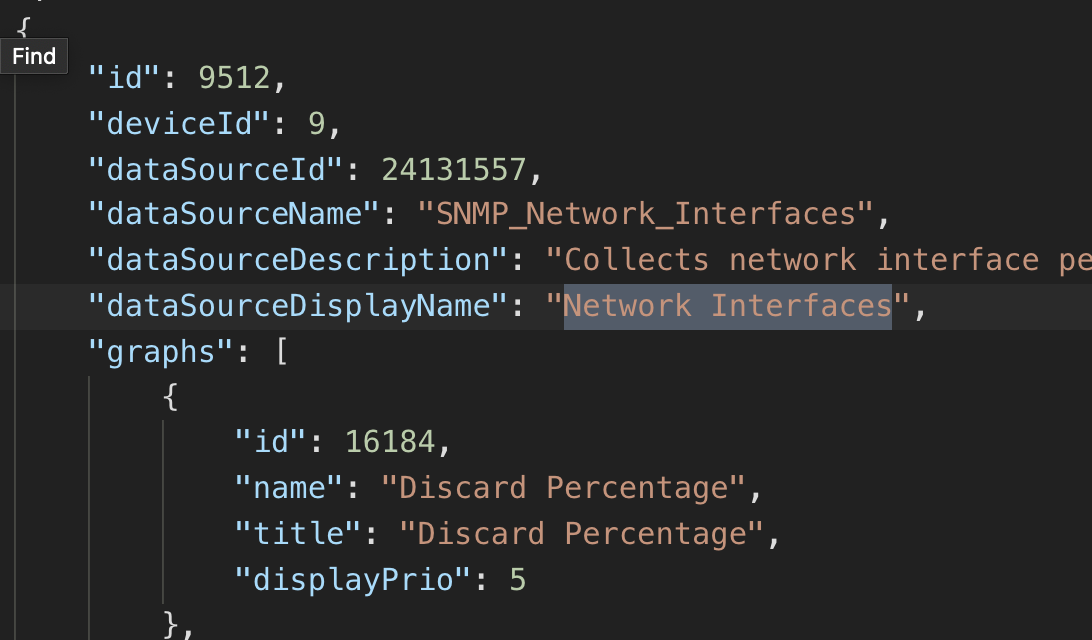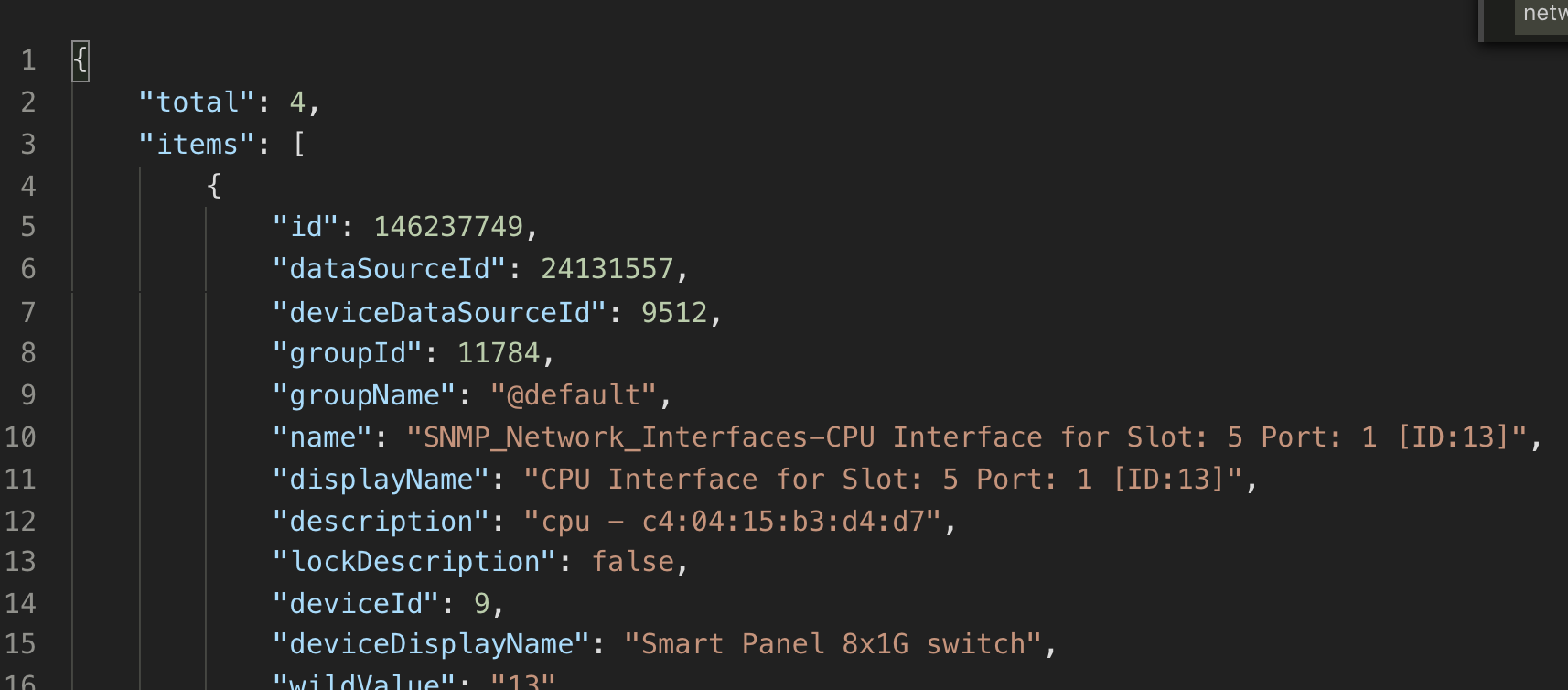Forum Discussion
- Anonymous
I'd need to see your code in order to help you troubleshoot it. Please remove any API keys/tokens before posting.
- Cole_McDonald
Professor
i'm trying to get to this data using Powershell... no errors, it successfully grabs the device, DS, and instances using the same functions... but the data returns an empty array for data that is present in the LM resources interface... thoughts?
- $resourcePath = "/device/devices/$($device.id)/devicedatasources/$($DS_CPU.id)/instances/$($inst_CPU.id)/data"
my output shows me this:
- Gathering /device/devices/6966/devicedatasources/503122/instances/9311756/data
No errors are thrown during the run. It's confounding me a bit.
- Anonymous
What do you get when you execute the same call through a href="https://communities.logicmonitor.com/topic/1964-accessing-the-logicmonitor-rest-api-with-postman-and-lmv1-api-token-authentication/?tab=comments#comment-4808" rel="">Postman?
- Cole_McDonald
Professor
3 minutes ago, Stuart Weenig said:What do you get when you execute the same call through a href="https://communities.logicmonitor.com/topic/1964-accessing-the-logicmonitor-rest-api-with-postman-and-lmv1-api-token-authentication/?tab=comments#comment-4808" rel="">Postman?
No idea... I've never used it... I've only ever used the PS functions I'm currently using... including to get other data previously. Although I'm not sure if I was using V1 or V2 at that time.
- Anonymous
Would suggest you get postman up and running and vet out all the calls you are trying to make before you try to code them in. That will eliminate the question of whether it's something about the call or Posh. Just a suggestion.
That said, when i did your call, the $($DS_CPU.id) variable is the id (9512), not the dataSourceId (24131557):

And my $($inst_CPU.id) was the id (146237749), not any other id. That one stumped me for a while until i learned that lesson.

So, my final call was {{url}}/device/devices/9/devicedatasources/9512/instances/146237749/data
Where my $($device.id) is 9, $$DS_CPU.id) is 9512 (id) and my $($inst_CPU.id) was 146237749.
- Cole_McDonald
Professor
I'll be getting postman running tomorrow... my time was up and had to move to another effort. Thank you for pointing the tool out to me. It looks really useful. and thanks for poking at my code. I'll verify I have the right IDs for each of those pieces as well. (Funny Note... I typed this up yesterday and didn't hit submit). I've verified that I have the right pieces and parts. You're examining the JSON in your examples... I use Powershell ISE and explore the return data using the variables. I have verified that I'm using the deviceDataSource rather than the dataSource:
PS C:\Users\cole.mcdonald> $inst_CPU id : 8976881 dataSourceId : 5725412 deviceDataSourceId : 427972 groupId : 538636 groupName : @default name : Perfmon_CPU-_Total displayName : _Total description : lockDescription : False deviceId : 5378and my call was:
/device/devices/5378/devicedatasources/427972/instances/8976881/data(I switched devices to verify that it wasn't just empty) I've tried grabbing data from both the instance directly as well as the graph data. I'm going to dig into postman... but looking at it, I don't know that it will necessarily show me anything different than I'm getting using straight powershell... and I generally dislike GUI'd applications for this sort of thing as I find them horribly inefficient (I'm old and grew up on CLI).
Here's my Postman return:
{ "dataSourceName": "Perfmon_CPU", "dataPoints": [ "PercentProcessorTimeCounter", "PercentProcessorTime" ], "values": [], "time": [], "nextPageParams": "" }So it looks like it's succeeding in the call, just no data returned. Odd, because the graph shows that there should be historical data there to grab.
- Anonymous
I think it's the 427972 that's not right. Hard to say without navigating your IDs directly.
Here's what I'd do (in code or in postman). If this is what you're already doing, ignore:
/device/devices -> find the "id" of the device of interest (here, i'll call it $device_id)
/device/devices/$($device_id)/devicedatasources -> find the "id" (not the dataSourceId) of the datasource of interest (here, i'll call it $DS_id)
/device/devices/$($device_id)/devicedatasources/$($DS_id)/instances -> find the "id" of the instance of interest (here, i'll call it $instance_id)
/device/devices/$($device_id)/devicedatasources/$($DS_id)/instances/$($instance_id)/data -> should have data here from the last hour
For what it's worth, i was skeptical about postman too. I'm old school CLI as well. But i quickly got addicted. The other thing i got addicted to was the Python SDK. Combining it with my custom LM wrapper, the code becomes:
from lm import lm data = lm.get_device_datasource_instance_data(9,9512,146237749)
Where 9 is the $device_id, 9512 is the $DS_id, and 146237749 is the $instance_id.
- Henry_Steinhaue
Neophyte
@Cole McDonald I agree it would make sense that once you have the unique instance ID you should be able to pull the information with that ID alone.
I'm creating the same type of reference utilization table based on the time series information and need to better understand the usage over the prime time day and the overnight window. One item I need to exclude is the obvious backup window time frame. That should be full usage of the circuit or interface and should not be factored in with 'normal' utilization. But still accounted for in terms of high usage during that interval.
Did you end up doing this work in Powershell? Or did you finish it off in Python? Curious as to how you finished up the project.
We have 90+ remote facilities each with dual WAN links and also an Internet connection now for the OS365 and other direct attached SAAS applications. Those application no longer use the Hub Spoke design for application use and have complicated the overall summation of utilization.
- Cole_McDonald
Professor
I do all of my work in Powershell at this point... makes it easier to tie the different toolsets together (although, not nearly as easy as Applescript does... but that's a different portion of my career).
- Cole_McDonald
Professor
My query params were wrong... I'd set them as a default for getting lists of resources past the device limit... buried them in a function... then forgot about them. Out of sight, out of mind. That function calls my send-request function (modified from the api docs here). Once I switched to my send-request function directly... I started getting results. Like I said previously... It's always something simple.
Related Content
- 5 days ago
- 2 months ago